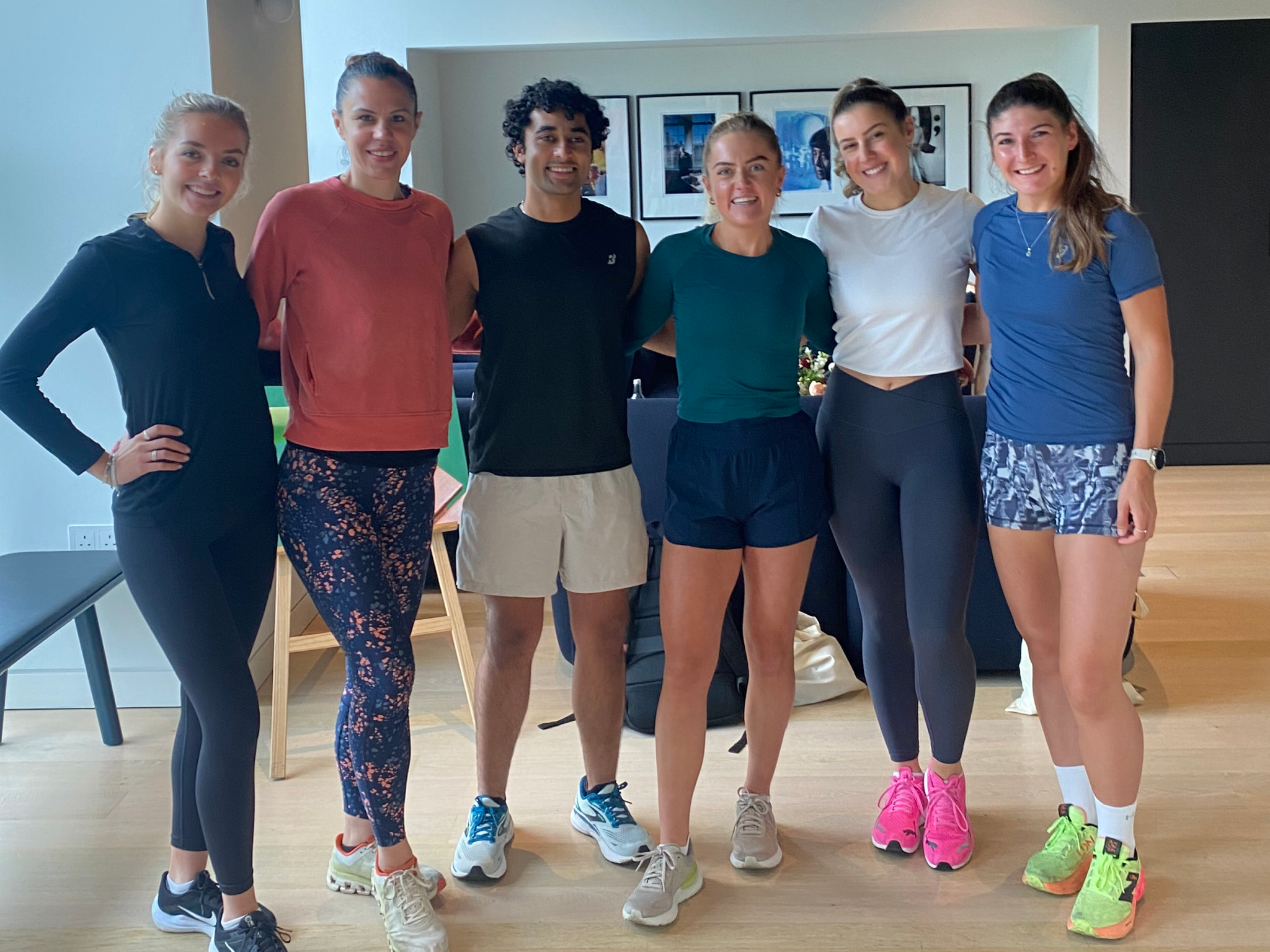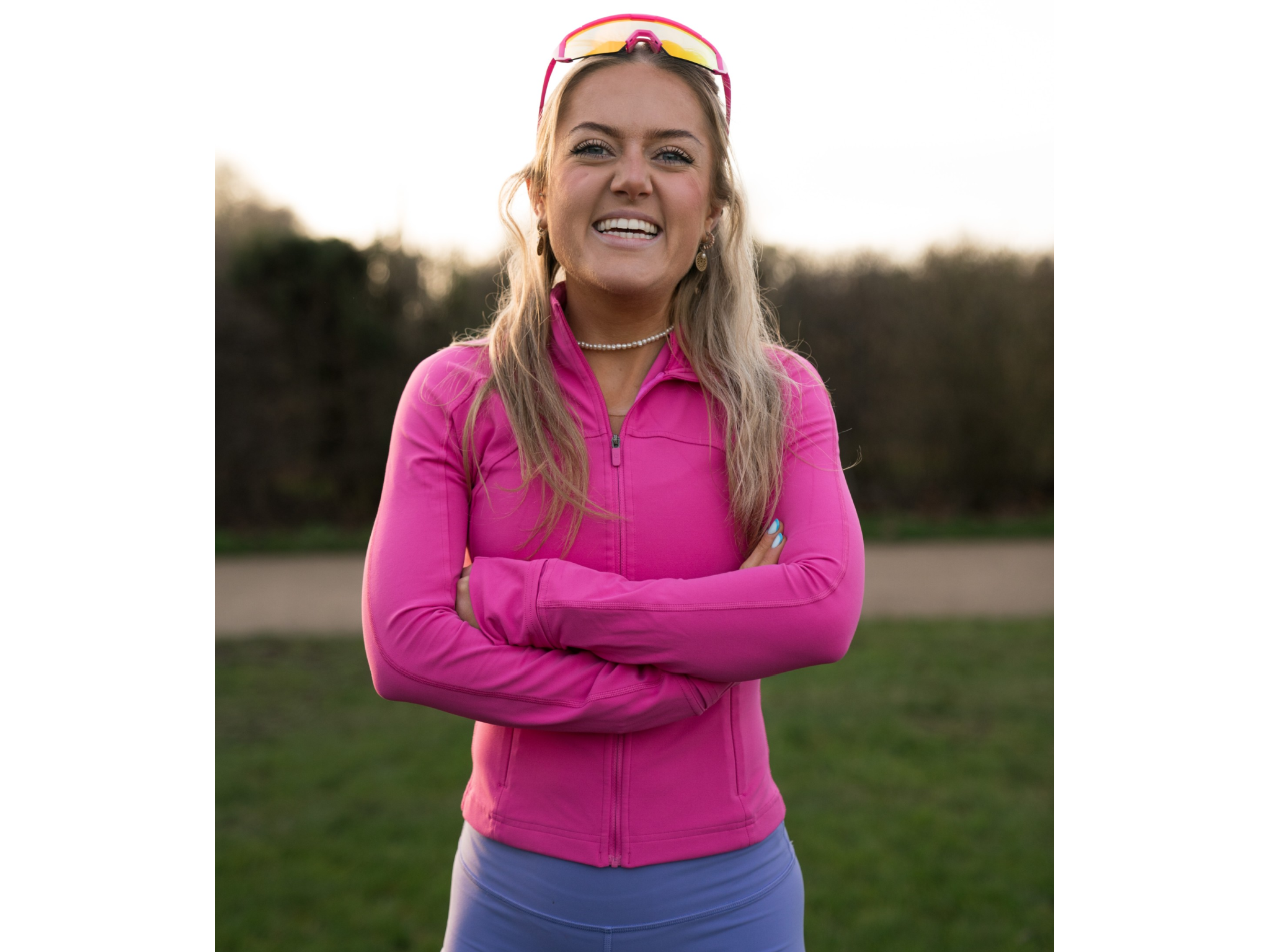The exact training plan Anya Culling used to run a 2.5-hour marathon
For the next instalment of How I Train, we caught up with record-setter Anya Culling for a run

With a marathon personal best of two hours and 34 minutes, Anya Culling lines up with the elite field when she races. However, she didn’t start running until her 20s and since beginning her journey has shaved two hours off her finish time in less than three years.
The obvious question on everybody’s lips is “How did she do it?”. When we met up with Anya to talk about her training, it was clear that she loves running and is totally committed to the practice. Most days she’s up at 5am to get a run while the parks and pavements are clear from children and dog walkers.
It’s this passion to keep improving at the sport she loves that’s seen her go from finishing the London marathon as the 7,546th woman in over four and a half hours to finishing third British female. Since then, she has consistently placed among the fastest finishers in marathons in Berlin and Copenhagen, earning her a reputation as a rising star in the running world.
Whether you’re thinking about doing your first marathon or half marathon, or you’re keen to improve your time across your favourite distance, read on for Anya’s tips on how to improve your speed, her insider secrets for recovery and how to push the boundaries of what you believe you’re capable of.
How to increase speed
Like most sports, mental toughness combined with physical strength is what sets running champions apart from the rest of the pack. Anya told us that she started to get better when she found the motivation to improve.
“At the start, I ran to be healthy and for my mental health,” she explains. “While I loved it, I didn’t start working on speed until the Covid lockdown. I used to go for runs with my brother and I was really slow and he said he wouldn’t go with me until I got faster. So I worked on my speed until I was able to keep up. And then keeping up became easy and I could tell that I was improving.”
When the lockdowns lifted, Anya joined a couple of running clubs, where the sport had more structure as well as a community of people to motivate her. And she recommends joining one if you’re looking to get the most out of your runs.
“First, it’s a really social activity where everyone looks out for each other and helps them improve. I used to think that running wasn’t much of a team sport, but if you go to a running club, you’ll find that people are willing to pace you so that you get faster. Most people want the best for everyone else and everyone runs alongside each other – and the atmosphere is amazing. It also means you have something to turn up to, which helps you stay consistent with training and not put off a session because you’re busy or tired.”

If, like Anya, you have a reason to get faster, her key tip is that “you have to get comfortable being uncomfortable”.
To build speed, you need to work within different heart rate zones. Zone one is 50 to 60 per cent of your maximum heart rate, which is 220 minus your age. For example, if you are 30 years old, your maximum heart rate would be 220 - 30 = 190 beats per minute. Zone one would be used for warm-up and recovery.
Zone four, which is 80 to 90 per cent of your maximum heart rate and when the body works in an anaerobic capacity, is the golden zone for getting faster. In this training zone, you optimise your speed endurance. Your body improves its ability to get energy from carbohydrates and increases its tolerance to lactate.
If you can boost your lactic threshold or the point at which you experience fatigue, you’ll be able to work out harder, for longer. A track session for Anya, she explains, might consist of a warm-up in zone one, five to 10 zone four bursts with recovery runs in between and then a cool down.
How to train effectively within different heart rate zones
When your lungs are burning and your muscles are starting to feel heavy in a zone four workout, having to think or remember anything feels like a huge effort. If you’re taking heart rate training seriously, fitness tech can really help with this and like many athletes, Anya relies heavily on hers.
“I train with the Google Pixel 3 watch,” says Anya. “Once you’ve set it up with your age and weight and other details, it will show you a colour and that will indicate what heart rate zone you’re in. For example, if my watch has a blue display, I know that I’m in zone one, which is the ideal speed for my warm-up. If it goes green, which is for zone two, then I’m going too fast and I need to slow down. When I need to get into zone four, I have to keep getting faster until I hit the orange. It’s great motivation.”
Another key feature of the watch is that it can store and play workouts. Watch users, or their coaches, can build workouts using other tech and trackers like the Fitbit app and send the workouts to the watch. This means the watch will alert the wearer when it’s time to speed up or slow down so they don’t have to concentrate on anything other than running. “It is like having a coach on my wrist at every training session, without having to pay for the coach’s time,” explains Anya.
The Fitbit app also allows you to store a full training plan in the lead-up to an event. A structured plan tells you when to run and how to train, eliminating the daily debate of whether you should run or rest. Most runners, whether beginners or pros find that a fitness tracker or wearable can keep you motivated, hold you accountable, and keep you on track to smash your goals, no matter the size.
The importance of recovery

Most people who are keen to improve tend to make mistakes such as overtraining and under-fuelling. But both of these can deplete the body and increase your risk of injury. Not all runs have to be done at full intensity.
To train for a marathon, Anya has to get the miles in. Most weeks will see her run 140km so that she has endurance in her legs when it comes to running a 41.2km marathon. However, not all of these training runs are track sessions or tempo sessions. She’s just as happy doing long, steady runs as she is doing speed sessions.
More importantly, she’s not afraid to skip a session if her body doesn’t feel ready. So she also uses a wearable to track her sleep. Anya explains that she relies on her watch to record the time she spends in light sleep, deep sleep and REM sleep and tracks her overall sleep score.
She also tracks her daily readiness score using data gathered from her heart rate variability (HRV), the past two weeks of sleep (with a weighted average built around a sleep reservoir concept), and her resting heart rate. If her readiness score is low, Anya will have a rest day and push sessions scheduled for that day back to a different day.
“I’m not afraid of rest days and I’m not afraid of carbohydrates,” Anya tells us, moving onto the subject of nutrition. “As a runner, you need to eat a lot of pasta and a lot of rice to fuel your muscles. I eat a lot more carbohydrates now than I ever used to.”
“I always eat pasta before a race. I’ve even used a kettle to make pasta, putting the pasta straight in the kettle, when I was in a hotel room and didn’t have a pan.”
How to perform your best on race day
Even elite athletes suffer from pre-race and mid-race nerves. However, Anya explains that other wellbeing techniques like journalling have really helped shut out negativity before a race so that she can focus on each mile as it comes.
“I journal every single day,” she says. “When training is going well, I write down how I’m feeling and how well I know my body can do in a race. I love to look back over my thoughts the night before a race and remember what I felt when I was in sound mind, without the pre-race nerves. My body can do so much more than my brain tries to trick me into thinking, and journaling is a way for me to remember that.”
In marathon running, it’s common to hit a wall around the 18 or 20-mile mark, when the body is tired but there is still a distance of 8 miles to go. Most people suffer around this point in the race, but it’s how people deal with it that can make a huge difference to their time.
“During the race, I just focus on every single mile. It’s a lot easier to stay motivated if you think of it as a collection of miles rather than a 26-mile feat of endurance,” explains Anya.
“If I’m flagging, I don’t alter my speed. I just try to focus on my form and make sure that I have a good posture. By the time I’ve corrected that, I normally feel better in my stride and that helps me to keep going.
“Sometimes I think how amazing I’ll feel at the end of a race and that visualisation also helps me to keep going, even when I’m hurting. The key thing to remember is that everyone finds marathon running tough, whether you’re Euclid Kipchoge or a five-hour marathon runner. You just have to keep going until the end!”
Read more: How to burn fat and train for a marathon no matter how fit you are




Join our commenting forum
Join thought-provoking conversations, follow other Independent readers and see their replies
Comments